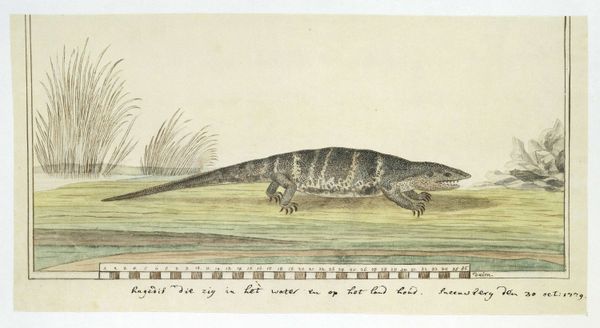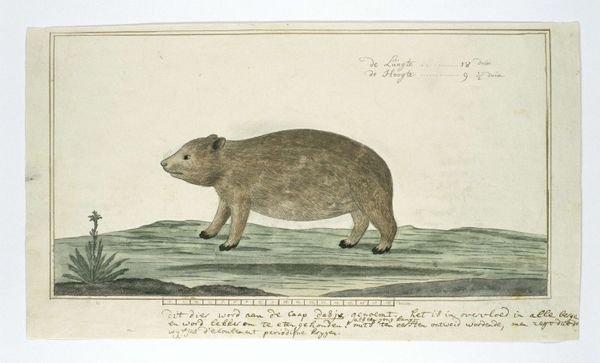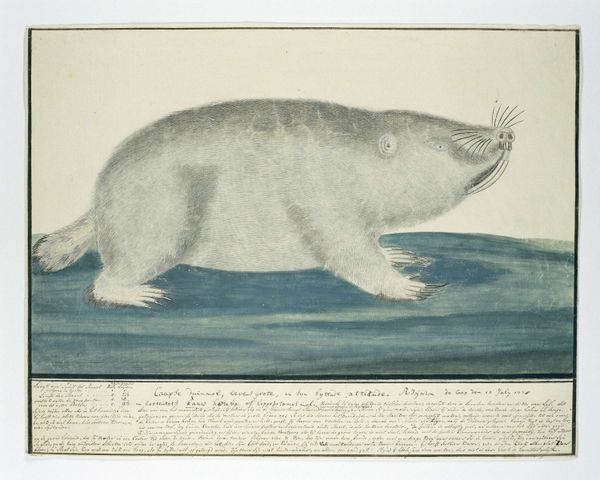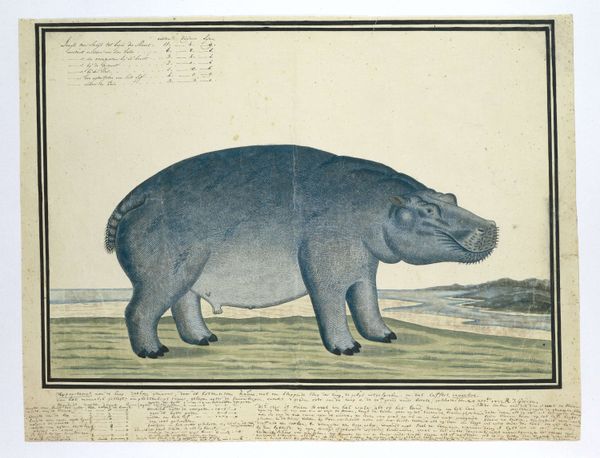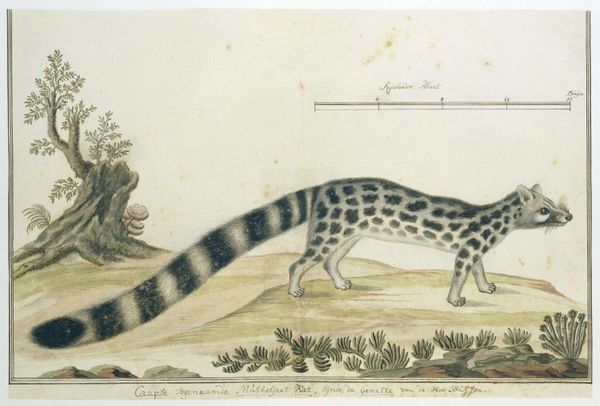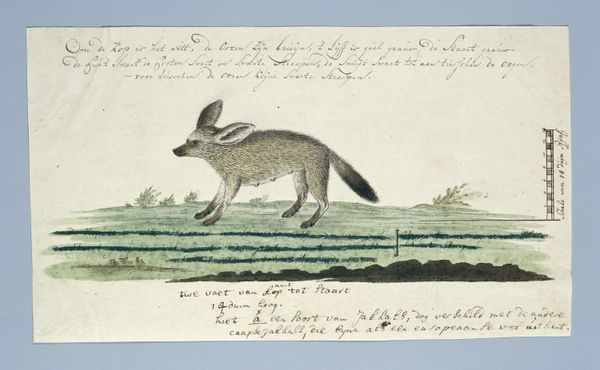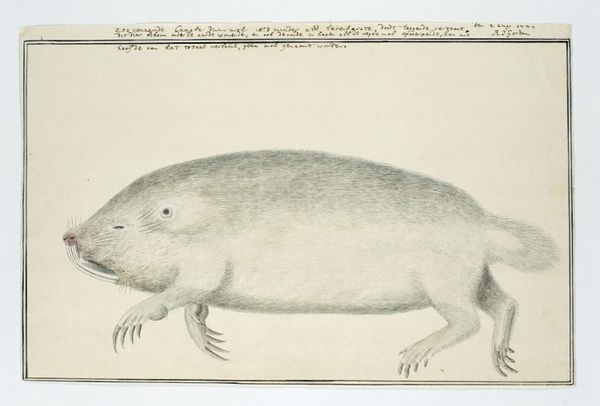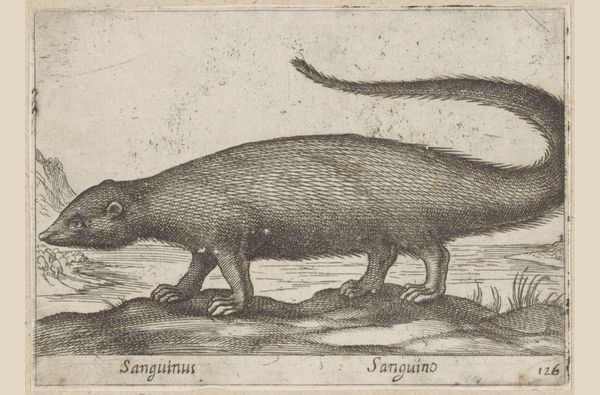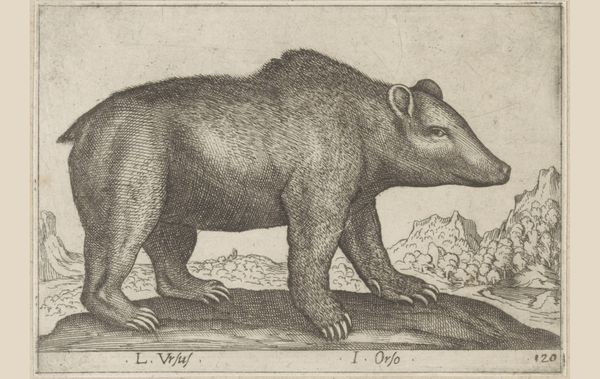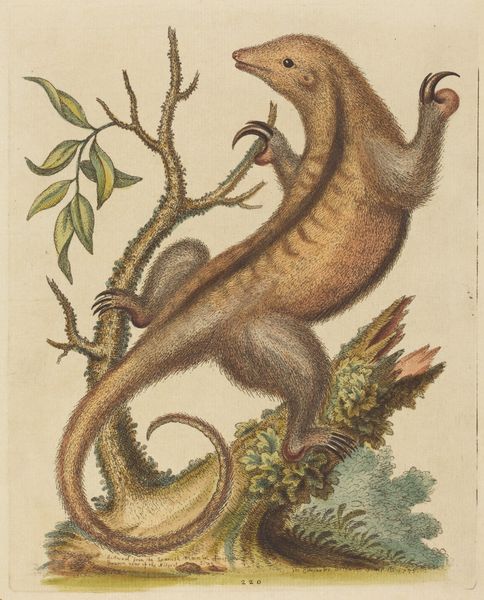
#
quirky illustration
#
childish illustration
#
green and blue tone
#
curved letter used
#
personal sketchbook
#
sketchbook drawing
#
watercolour illustration
#
cartoon carciture
#
sketchbook art
#
watercolor
Dimensions: height 660 mm, width 480 mm, height 226 mm, width 390 mm, height 171 mm, width 388 mm
Copyright: Rijks Museum: Open Domain
Curator: Here we have Robert Jacob Gordon's "Mellivora capensis (Honey-badger)," dating from between 1773 and 1780. It’s rendered in watercolor, a charming example from what seems to be a personal sketchbook. Editor: Charming is one word for it. My first impression is actually how incredibly docile the creature appears, almost…pathetic? Considering honey badgers are known for being notoriously fearless, that seems quite odd to me. Curator: It's precisely that tension that makes this illustration so compelling! Gordon was a military officer and explorer, and his journals, filled with sketches like these, documented the flora and fauna he encountered in Southern Africa. He wasn't necessarily striving for scientific accuracy in the way we might expect today. Editor: Right. It’s a Western gaze, attempting to capture something "exotic," but inevitably filtered through colonial perceptions and assumptions. Look at the posture—slightly slumped, almost apologetic. Does it speak to a larger narrative of dominance and subjugation? Curator: I think it speaks to observation. There's a childlike innocence here too. This creature may have stood for ferocity, but is depicted instead as benign. One could say, it reflects not the animal’s reality, but humanity’s projections—what does the artist see or want to see, that gives a clue of the cultural significance given to this animal? Editor: I appreciate that read. Though, I’m hesitant to fully divorce it from the socio-political context. These images, however innocent they seem, were still instruments of knowledge production that legitimized colonial expansion. It's important to not let any depiction get away scot-free. Curator: Fair point, certainly a view to take in consideration. I see its purpose was to depict what one sees, like someone looking at the animal from the window, with as few interpretation or bias involved as possible, as if seeing the raw creation untouched. But indeed no observation is untouched by bias. Editor: I see this work as a reminder that representations are never neutral. Curator: Absolutely. I would then propose an openness in viewing that makes the audience’s projections interact with those the author has laid on the canvas, making an exchange where no message is privileged. Editor: So it makes us examine our own roles. Curator: Exactly!
Comments
No comments
Be the first to comment and join the conversation on the ultimate creative platform.

